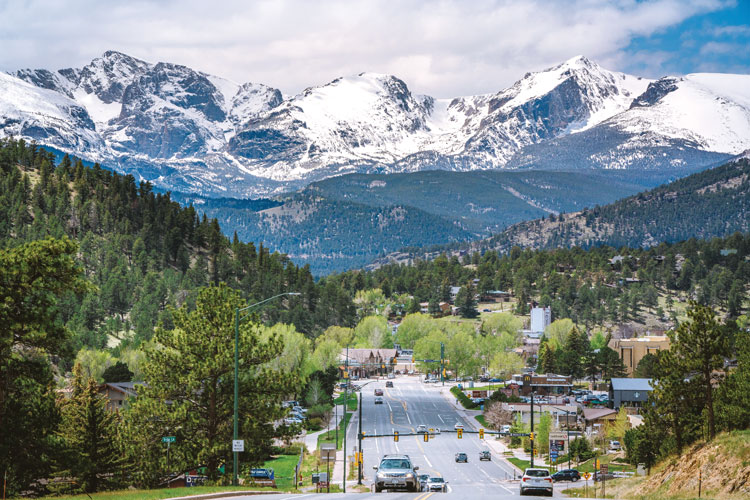
Scenic mountain village may find new spotlight
ESTES PARK — Already acclaimed for its scenic location and access to Rocky Mountain National Park, Estes Park could garner some extra attention as part of the effort to lure the Sundance Film Festival to Colorado.
The 116-year-old, iconic Stanley Hotel, which inspired Stephen King’s novel “The Shining” and the movie version by Stanley Kubrick, hosted the Sundance Directors Lab program in May. The Stanley has been at the center of its own drama as well, with longtime owner Grand Heritage Hotel Group trying to sell the hotel property while also attempting to get state investment to complete the long-planned Stanley Film Center.
The Stanley also gave the town a boost for one of its slower seasons when owner John Cullen purchased Nederland’s annual March “Frozen Dead Guy Days” festival, moved it to Estes, and opened a Cryonics Museum in the hotel’s historic ice house to house the frozen corpse of the festival’s namesake, “Grandpa” Bredo Morstoel.
In summer, when throngs of visitors escape the lowland heat for a dose of cool mountain adventure, the town grows by the tens of thousands.”
As legendary as Estes Park’s scenery, however, is its resilience. It survived the deadly 1976 Big Thompson flood that destroyed a prime access route. It survived the 1982 Lawn Lake dam break, which buried its downtown in knee-deep mud at the height of the tourist season. It survived a one-two punch in 2013, when washed-out roads on all sides blocked entry and a subsequent government shutdown closed the national park. When the COVID-19 pandemic forced closure of the park and the town’s overnight accommodations, it again weathered the storm. And in autumn 2020, it survived perhaps its most direct threat, as monster wildfires forced the town’s evacuation and were held at bay only by heroic efforts at its very doorstep.
Estes Park has a year-round population of slightly more than 6,000. But in summer, when throngs of visitors escape the lowland heat for a dose of cool mountain adventure, the town grows by the tens of thousands, prompting adoption of paid parking in the downtown core, a color-coded free transit system, an accompanying all-day parking pass, and a timed-entry system for the national park designed to ease crowding.
The challenge for the town and its economic-development infrastructure has been to build a more viable year-round economy while also addressing how best to improve the experience for the hordes of tourists that crowd the village in summer. Toward that end, the town is turning downtown streets into a one-way loop with the aim of easing summer traffic jams.
Estes Park’s alpine surroundings attract visitors and new residents alike. The Big Thompson and Fall rivers rush downhill from the park to converge in the center of town. The Rooftop Rodeo, Independence Day fireworks over the lake and the massive Longs Peak Scottish-Irish Festival on the weekend after Labor Day have roared back after weathering pandemic-related restrictions.
Estes voters addressed the need for affordable workforce housing by approving an increase in the lodging tax from 2% to 5.5%, allocating the additional 3.5% – revenue estimated to be around $5.25 million – to fund workforce housing and child-care initiatives.


